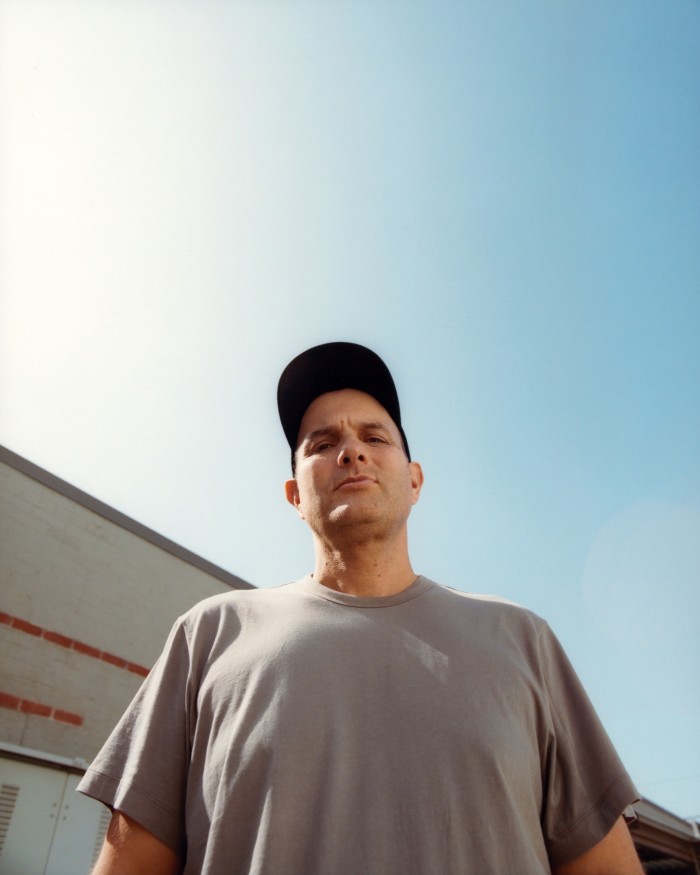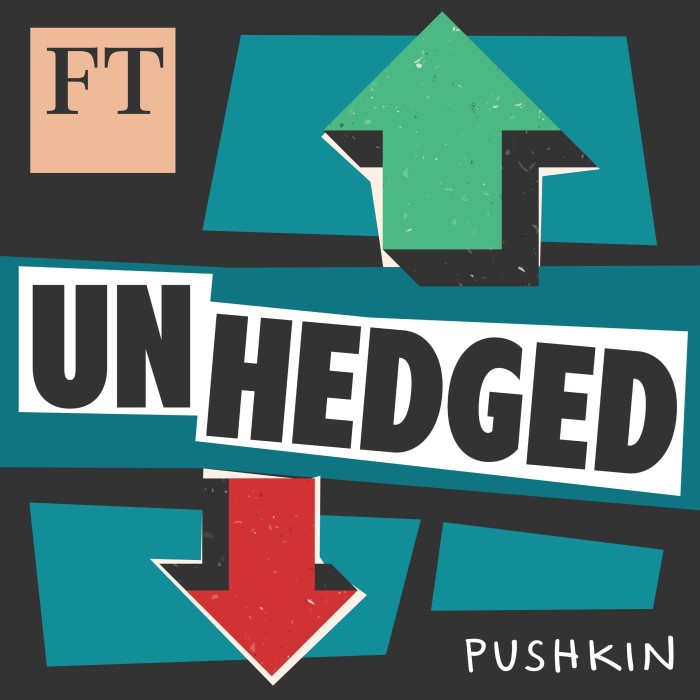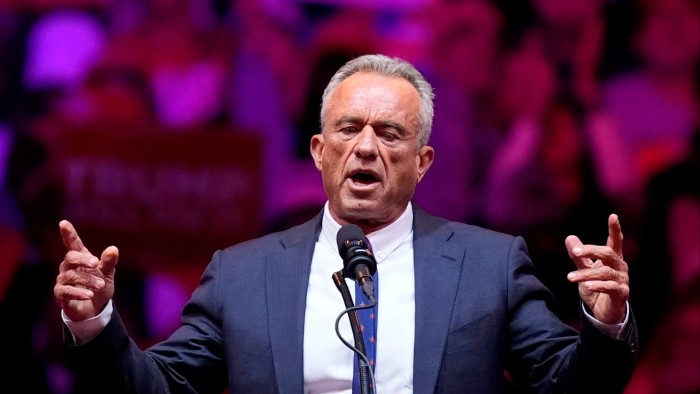Dr Dre is frustrated. “What are you gonna do?” the legendary rapper-producer asks the group of executives in front of him expectantly. “We got a thousand mothafuckas in here . . . It would be great if somebody could entertain my question.”
It’s a Sunday night in August, and Dre has taken a break from working in the studio to attend a meeting with business executives, an unappealing activity that he has avoided for a decade, until tonight. Now, he’s working on an album with Snoop Dogg, the pair’s first full-length record together in 30 years. The stakes are high.
Snoop, who is fresh from the cultural ubiquity he enjoyed as a special correspondent for NBC at the Paris Olympics, is still jet-lagged, having only landed home in Los Angeles 36 hours earlier.
As Dre lays into the executives, Snoop sits on a sofa smoking joints and giggling. He is lounging in a forest-green sweatsuit as a cloud of smoke swirls up to a fiddle-leaf plant behind him. He looks like a painting.
The room, an airy industrial space at Interscope Records’ studios in LA, is heaving. Interscope’s chief executive, John Janick, has flown in a couple of dozen employees for a week of strategy sessions. Heads of marketing from China, Germany, Australia and other key markets are here, alongside Jimmy Iovine, the former Interscope chief who built the label into a powerhouse in the 1990s with artists like Dre, Snoop and Eminem.

Decked out in a flamboyant Hawaiian shirt paired with blue tinted glasses and a backwards cap, Iovine says he no longer works for Interscope officially, but is here because “I’m the only one who Dre will talk to”. He, Dre and Snoop are in a sentimental mood, reminiscing and trading insults. Snoop does an impression of Iovine’s thick Brooklyn accent. Next to Iovine sits Lucian Grainge, chief executive of Interscope’s owner Universal Music, the world’s largest record company. The two men appear to have a close rapport, whispering and laughing with each other.
We’ve just listened to four tracks from the new album at a deafening volume, while the execs nod their heads approvingly (one faintly offers a “Woo!”). Dre’s questions last about 15 minutes, but feel excruciatingly longer. “What can you do, that we can’t do ourselves?” he repeats.
A brave soul speaks up, promising to make the record number one “in every country in the world”. “That’s really vague and generic,” Dre shoots back. “I wanna hear anything specific . . . I’m talking about ideas for marketing and promotion . . . I just need a thought. Nobody’s answering the question.”
Dre’s point is one that has been made since the modern music industry was invented a century ago. What value does a record label provide? But it’s a question that has been asked more insistently in recent years. With the rise of Spotify, momentum and cash have flowed into the industry in a way not seen since the heyday of CDs. Universal is one of several music companies to have listed on public stock exchanges, while private equity investors have also entered the fray. But radical changes to the business have also left music labels defending their worth to both artists and to Wall Street.
Janick took over the role of chief exec from Iovine, but the two have contrasting styles. Where Iovine is gregarious, all gut instinct, Janick is more quiet, content to interject every so often. Grainge approves of the dynamic, saying “one didn’t suck the other’s energy out of the room”. When Janick does say something, he is so softly spoken that I worry my phone recorder won’t pick up his words.
Iovine’s Interscope was accused by US politicians of debasing society with the violence of its artists’ lyrics. Under Janick, the label has been defined by empowered young women such as Billie Eilish and Olivia Rodrigo. In common with his predecessor, Janick has an impressive track record for picking artists. But he is also fluent in corporate speak. He talks about “flywheels”, an Amazon-like business concept designed to maximise fans’ spending, and he regularly cites business books.
On Janick’s watch, Interscope has been battling with Republic, another Universal label, for the title of the largest US record label, with each taking more than 10 per cent of all industry sales in any given quarter. In March, Grainge gave him a big promotion, handing him control of all of the US West Coast labels. Earlier in the evening, Dre stated that “John stepped into a big pair of shoes” in replacing Iovine. Could he one day succeed Grainge as the head of a company worth more than $40bn and the de facto leader of the music business?
We’re in a huge black SUV heading to an Olivia Rodrigo concert, one of a string of sold-out shows for the 21-year-old star who grew up in LA. The car weaves through the parking lot, where a sea of girls are dressed like Rodrigo: combat boots, glitter, plaid skirts, purple everywhere. (It’s Rodrigo’s favourite colour.)
Janick remembers when the singer first came into his office in February 2020. A song she had written for the High School Musical TV series was “moving” — industry speak for gaining traction on streaming services — and had attracted the attention of various labels. Janick wasn’t sure. He looks for artists who can change the culture. At the time, Rodrigo was best known for being on a Disney Channel show.
That changed the instant that he met her. “She kind of radiated, you could just tell, you know?” he says. “You just know when somebody’s a star . . . And it was immediate, like, how do we sign her?” Released in January 2021, a few weeks before her 18th birthday, Rodrigo’s break-up ballad “Drivers License” broke streaming records on Spotify and catapulted her to global fame, racking up billions of views on TikTok, Spotify and other platforms, and soundtracking much of that year. What begins as a wispy bedroom song about reaching an otherwise unremarkable high-school milestone builds into a surprisingly powerful ballad that works on kids and anybody who remembers being one.
Rodrigo has since picked up various Grammys, while the tour, which wrapped in October, earned $186mn in sales, making it the highest-grossing for an artist born this century.
Rodrigo and Eilish are Janick’s two major accomplishments as Interscope CEO. Over the past several years, music executives have agonised over how hard it is to break new artists in an ever more fragmented culture. The two young women — signed at 17 and 14 years old, respectively — are easily the biggest new pop stars of the past decade.
In 2015, when she was 13, Eilish posted her breakout song, “Ocean Eyes”, to the streaming platform SoundCloud. The song had been written by her brother for his band, but Eilish convincingly translated the maudlin dreaminess of lyrics such as “Burning cities and napalm skies/Fifteen flares inside those ocean eyes.” The track blew up. Today, she has an enormous following among smart and jaded teenage girls. In January, her music reached a billion streams on Spotify.
Hitmakers
The “sad girl” sub-genre that bloomed in the wake of Eilish’s success is an example of what Janick means when he talks of artists who can move the culture. Social media, Covid-19 lockdowns and Gen-Z angst have all been factors in its popularity. “I think younger listeners don’t really relate to a song that’s like, ‘Life is awesome, yay.’ It feels truer and more resonant to have an artist be like, ‘My life is complicated,’” says Nate Sloan, a Stanford-trained musicologist who co-hosts the music podcast Switched On Pop. The perceived access that fans have to artists on social media has also made people crave intimacy and a personal connection to them, he adds.
Janick says companies wanted to sign Rodrigo because her song in High School Musical was showing up on the research. “But to me, everybody gets the same research pretty much now. The real art is picking.”
A similar approach informed the launch of Eilish, another artist whose specialness comes, says Janick, from marching to the beat of her own drum. Months ahead, a plan to carefully drop Eilish’s music and visuals into the world was drawn up. “I’ve found in my career, you get in this zone where you just kind of know? And then you can almost see the future, like nine to 12 months ahead of anybody else. Because you can feel the culture. You can see what’s happening. You can see it in the artist and how they’re moving.”
From the moment Rodrigo takes to the stage at the gig Janick brings me to, the audience appears, on a scale of one to 10, to be at about a 12 in terms of emotional intensity. Mothers and daughters hold hands, swaying, while Rodrigo displays personal footage of herself as a child on the jumbo screen as she sings the words: “It gets better the more you grow . . . but what if I don’t?” During the chorus to “Traitor”, she belts out “You betrayed me!” and an ocean of hands shoots skyward castigating the hapless villain. Towards the end of the show, Rodrigo stops the music and silences the crowd, asking them to “Think about something or someone who really fucking pisses you off” and then “Scream as loud as you can.” In a flash, the arena becomes a thunder of catharsis.
If Eilish and Rodrigo are Janick’s Marvel and Star Wars, other Interscope acts like boygenius, Lana Del Rey (who helped take the sad-girl aesthetic mainstream a decade earlier), Gracie Abrams and Reneé Rapp have made the label something of a home for emotional, lyrical female singer-songwriters. (Janick still laments his failure to sign Chappell Roan, the breakout star of 2024, who seems to fit the Interscope mould but is now signed to Island.)
How has a forty-something man become the go-to for a generation of women artists? When he first joined Interscope, Janick was labelled as an “emo-pop-punk guy”, having made his name unearthing the likes of Fall Out Boy, Paramore and Panic! at the Disco. “People were saying to Jimmy Iovine, ‘Who is this fucking 32-year-old who’s a rock guy?’” says Janick. He baulks at the notion of being the sad-girl guy, or being boxed into any one genre. But others are willing to explain his appeal.
Aleen Keshishian, CEO of talent company Lighthouse Management & Media, and manager to Rodrigo and Selena Gomez, another Interscope artist, says, “The first thing an artist like Selena or Olivia connects to is John’s warmth.” Not everyone in the industry with Janick’s power and stature is as perceptive or honest, she adds. It was a sentiment echoed by others I talked to. “John has both EQ and IQ,” said one Interscope employee who didn’t want to talk on the record. “He has empathy, which not everyone in this business has.”

During the lengthy competition to sign Eilish, the singer and her parents took meetings with other record labels. Janick says he told her mother Maggie, “I will have her and your back, through everything, and make sure we always do the right thing by her.” When another label offered to double Interscope’s offer, Eilish declined. “It’s business, but it’s personal too,” says Janick. “You get to know these people. [With] art and being creative, you get very vulnerable, right? There’s a lot to it. A lot of it’s being a psychologist.”
The concert is a family affair. Rodrigo’s mom is here, while Grainge has brought his daughter Alice, and Janick is accompanied by his 12-year-old son, Beaux. We’re on the floor, but it’s surprisingly roomy, leaving space among the 17,000 crowd for fans to film TikTok videos of themselves. As the audience sings every lyric, Grainge watches on, grimacing slightly. “The annoying thing about her is she is a 30-, 40-year artist. We’re going to have to renegotiate with her over and over,” he says. “It’s like getting Ronaldo at age 20.”
Backstage, everyone is happy with how the show went. Rodrigo comes to hang with the group, all hugs and smiles and still in her stage costume — glittery shorts and a tank top that says “VOTE”. Beaux is playing a pinball machine with Towa Bird, a British-Filipino queer Gen-Z alt-rock act Janick signed to Interscope a few years ago. We’re eating candy and popcorn. It’s hard to imagine Iovine in this wholesome setting.
The flywheel is Janick’s star-making template. It’s a chyron-esque business-school concept that he learnt about in the seminal management book Good To Great by Jim Collins. The flywheel means that all the different components of a business can boost momentum and build off each other. It is Amazon selling laundry detergent to you through the Alexa speaker after you’ve watched a cleaning reality show on Prime Video. Except that the product is, in the case of Eilish, a 22-year-old singer who writes about “eating girls for lunch”.
In a presentation to staff that week, Janick outlined his ambition to apply the business model that has worked for Eilish and Rodrigo to newer acts like Abrams and the K-pop-inspired Katseye. “We set out specifically on Billie to almost make it show that this is what we’re capable of. And then obviously [we were] able to replicate it with Olivia,” Janick tells the Interscope team. “It’s really a math equation in some respects, right? We know we’re going to throw off X amount of dollars based on revenue and profit, so we should be spending, building that brand up, so that the next time she comes out for her album, it’s increasing by 30 or 40 per cent in consumption.”
Good To Great is, predictably, about how businesses struggle to make the transition from good companies to great ones, often through leaders’ failure to put people in the right roles or not hammering home their competitive advantage. Janick was so enthused by its theories that he sought out the author, hoping to hire him to run a session with the Interscope team. He quickly discovered that Collins books two years in advance. Luckily, Collins was intrigued by Interscope and invited Janick for a half-day’s brainstorming, free of charge.
During the presentation I attend, Janick tells staff, “We can superserve the artists in pretty much every vertical of their career.” Whether or not that is the kind of answer Dre was hoping for during his meeting with executives, the strategy seems to be working. To date, Eilish has launched perfumes and brand partnerships with Calvin Klein and Nike, among others. Now, according to Janick, a host of Interscope artists will be able to fit into the flywheel in their own way, including some who are no longer alive, like the rapper Tupac Shakur.
Some industry observers believe the businessification of music is overdue. “When the major labels were either not public or were buried within much larger companies . . . there was this perception that the music business wasn’t a business as much as it was like a dark art,” says Bill Werde, director of the music business programme at Syracuse University and the former editorial director of Billboard. “That’s run smack into the brick-wall reality . . . There’s an expectation on Wall Street that growth and margin are things that matter.”
It’s a distant memory now, but in 1992, Interscope became the distributor for Death Row Records, which would be implicated in various murder charges during the East Coast vs West Coast rap wars. Long before Snoop was a family-friendly brand on NBC, he faced murder charges in Los Angeles Municipal Court. (He was found not guilty.) The reputational damage incurred during this period was so severe that Time Warner cut ties with the label, selling its 50 per cent stake for $115mn in 1995.
“All those old-school guys, they were swashbucklers. The Interscope thing, with all the edgy lyrics, the political hot water, they were real cowboys,” says Matt Pincus, a music executive and investor who rose up the industry around the same time as Janick. “It’s just a different mentality now. John and his generation were young when they were absorbed into the major label system. So they’re going to be less risky, less volatile.”
Throughout the week I spend with him, Janick remains reserved and earnest. Some at the company view the self-effacing style as a good thing. Another employee says that, during the “Jimmy era”, staffers would avoid making eye contact with Iovine. “He would come up from the car park and lock the elevator so no one else could use it,” the employee recalls. “John is so different. He’s open.” (A person who was familiar with this situation says security at the time was tight. “Do you know what Interscope was like in the ’90s?”)
Others put a different spin on this. “Janick has all the credentials of a proper music industry legend like Jimmy Iovine, but he has none of the charisma,” says a former colleague of Janick’s from his time at Warner Records.
Janick says he never wanted to be in a band himself, but, “I liked the idea of turning people on to something new, or, I guess, feeling I knew something that people didn’t,” he tells me. He grew up in a small town on Florida’s Gulf Coast where his parents, who were supportive but hands-off, let him swim in the alligator-infested estuaries by their house. Janick and his brother were both adopted, but he didn’t find out until he was in middle school. Though “I kind of always knew”, he says.
As a teenager in the 1990s, he was heavily into hip hop and punk rock (“the stuff you would have to buy through mail order”) and going to underground shows. He started his first record label when he was 17. Back then, the internet was still in its early stages. With an $800 savings bond he’d received from family, he started a second label out of his dorm room at the University of Florida. Fueled by Ramen was one of the first labels on MySpace, MP3.com and YouTube. “We didn’t have much money, so we were always trying to figure out how to get to the kids,” Janick says. He did everything from printing T-shirts to cutting royalty cheques by hand.
Janick built the label into a formidable presence, discovering bands like Fall Out Boy, Jimmy Eat World and Paramore at a time when the industry was being decimated by piracy. “There aren’t many indie entrepreneurs who have had his level of success because the business was going through Armageddon,” says Pincus.
The majors took notice, and in 2008 Janick decided to sell half of the company to Warner Music, catapulting him into a new life in New York. He was 26 when took on the task of rebooting Elektra Records, where he signed Bruno Mars and Ed Sheeran, who would go on to become two of Warner’s biggest acts. But he wanted to be more involved at the highest levels of the company and grew frustrated. “I was a bit trapped in a box. It was, just do your thing that you do, keep breaking an act every year.”
In 2012, he joined Universal and Interscope. According to employees, as CEO, Janick clamped down on costs, ending a period of lavish spending. He says diplomatically that Interscope was not losing money when he took over, but “it wasn’t as profitable”. He restructured, laying off a couple of dozen employees and asking others to lower their salaries. “I had to tell people, ‘If you want to stay, you’re going to have to take less money. But if we hit our goals, you’ll make more money than you made before.’” Within the first year, Interscope’s profit more than doubled.
He did it while battling cancer. A few weeks after joining the company, Janick “felt a lump”. He had surgery to remove the cancer, but it returned five years later, when he went through three months of chemotherapy, followed by a separate surgery to remove a brain tumour. Just as he had when he found out he was adopted, Janick “jumped to other things”. He worked throughout his treatment and only mentions the illness after full discussions of corporate culture and the flywheel.
Some industry observers believe Janick’s promotion has pitched him into an unofficial battle to replace Grainge at the top of Universal one day. (A person with knowledge of the company’s plans said any succession speculation is premature.) Grainge has given a similar role to Monte Lipman, the head of Republic, triggering speculation the pair are preparing to fight it out. Grainge is famous for “hiring these entrepreneurial-minded executives and setting them loose to compete with each other”, says Pincus.
Grainge says his decision has been vindicated. “Look at the results before, and look at the results since,” he tells me. “It’s me knowing that, smelling it, feeling it, seeing it, and having worked with [Janick] to know there’s absolutely no doubt in my mind that it was the right decision. It’s the right people and the right time.”
Janick’s other big project of the moment is Lady Gaga. The superstar singer, née Stefani Germanotta, is about to release new music for the first time in four years and has, like Dre and Snoop, come to the studio to meet with Interscope executives. This time, there’s a nervous energy in the packed room. More chairs are brought out. Someone walks by holding a paper cup filled with lemon slices, assembling a series of beverages for Gaga.

Now 38, she has been with Interscope since the Iovine days, and has formed a close relationship with Janick. In a statement to the FT, she described him as “an incredible partner and trusted friend. His understanding of culture and how to support new artists is the best in the industry. I feel lucky to have him in my corner.”
Gaga arrives dressed in a long black coat and heeled boots (it’s sunny and 30C in Los Angeles) and greets the room, giving hugs to Grainge and a few others. On the screen are meticulous plans for rolling out all kinds of things that I’ve agreed not to write about. Some have since been announced: a song with Bruno Mars and a surprise album she made to accompany the new Joker film that she starred in. They play the song, called “Die With A Smile”.
“That’s a song that is a hit, in any decade,” Janick says when it finishes, the most animated I’ve seen him. “There should be [YouTube] shorts of wanting to be next to somebody dying with a smile. It should be in TikToks of people singing with a cigarette in their mouth, there’s so much . . . We have a really robust plan.” Janick has a “PhD in YouTube” according to Lyor Cohen, a longtime music exec who is head of music on the platform.
Gaga is another Interscope artist who has shaped the zeitgeist. In the 2010s she combined Taylor Swift-like sales with a countercultural edge. The year she first rocketed to fame, she showed up at the MTV Video Music Awards in a dress made entirely of raw beef. In the process, she inspired a legion of devoted fans, who she christened her “little monsters”. In a passing of the baton of sorts, Gaga has offered her mentorship to Eilish, noting how she struggled to find an older woman in the industry to look to in charting her own path.
But this meeting is part of a comeback mission. And Janick, in his understated way, acts as both coach and cheerleader to Gaga. “She told me she was making a lot of music but just wanted to wait for the right time,” Janick explains to the team. “I got to hear the music and it was spectacular.”
Over the next few months the grand plan will have extremely mixed results. Janick was right about “Die With A Smile”. The dramatic ballad caught fire, topping the charts in 17 countries including the US, where it became the longest-reigning hit of the year. But another key piece of the strategy fared badly. Janick had suggested that Gaga, an Oscar-winning actress, could receive another nomination for her role in Joker: Folie à Deux. When the movie landed two months later, it bombed badly with both audiences and reviewers. “Even Lady Gaga can’t save this movie,” wrote Slate’s film critic. Despite positive reviews, the album’s fate was sealed.
It’s a decent case study for the precarious nature of the music business. Nothing is guaranteed, no matter the track record of your artist, or your executives. “If change is uncomfortable for you, if you like gripping on to the status quo and protecting something . . . you’ll be spat out of the industry,” says Cohen. “But if you’re a person that enjoys when the machinery grinds and sparks are flying . . . ” Janick, he suggests, is such a person.
It’s a tense time for the industry. The music-streaming growth spurt has finally stalled. Artists are able to build their own fanbases on TikTok, further tilting the power towards themselves and away from the labels. Yet Janick is convinced they are needed more than ever. “If an artist wants to do it on their own, they think they can do it alone, God bless, you know?” But in his view there is usually a ceiling to what an artist can do on their own. His job is to help them break through that ceiling.
Anna Nicolaou is the FT’s US media editor
Follow @FTMag to find out about our latest stories first and subscribe to our podcast Life and Art wherever you listen















































































































































































You must be logged in to post a comment Login